Hungarian Americans
Hungarian Americans (Hungarian: Amerikai Magyarok) are Americans of Hungarian descent. The U.S. Census Bureau has estimated that there are approximately 1.396 million Americans of Hungarian descent as of 2018.
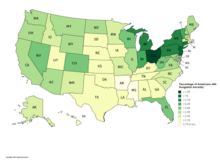 This is a map showing states by the percentage of Americans they have claiming Hungarian Ancestry in 2018 according to the Census Bureau | |
| Total population | |
|---|---|
| 1,396,014 U.S. Estimate, 2018, self-reported[1] Around 0.43% of the U.S. population | |
| Regions with significant populations | |
| Ohio, New York, California, Pennsylvania, Texas, New Jersey, Michigan, Florida | |
| Languages | |
| American English, Hungarian, Yiddish, Romani | |
| Religion | |
| Roman Catholicism, Protestantism (Hungarian Reformed Church), Judaism, Greek Catholicism, Eastern Orthodoxy | |
| Related ethnic groups | |
| Hungarian Canadians, European Americans |
History
In 1583, a Hungarian poet Stephanus Parmenius, joined Humphrey Gilbert's expedition to North America with the intention of writing a chronicle of the voyage and its discoveries. Parmenius reached Newfoundland, likely becoming the first Hungarian in the New World.
Hungarians have long settled in the New World, such as Michael de Kovats, the founder of United States Cavalry, active in the American Revolution. Hungarians have maintained a constant state of emigration to the United States since then; however, they are best known for three principal waves of emigration.
Agoston Haraszthy, who settled in Wisconsin in 1840, was the first Hungarian to settle permanently in the United States[2] and the second Hungarian to write a book about the United States in his native language.[3] After he moved to California in the Gold Rush of 1849, Haraszthy founded the Buena Vista Vineyards in Sonoma (now Buena Vista Carneros) and imported more than 100,000 European vine cuttings for the use of California winemakers. He is widely remembered today as the "Father of California Viticulture" or the "Father of Modern Winemaking in California."[4]
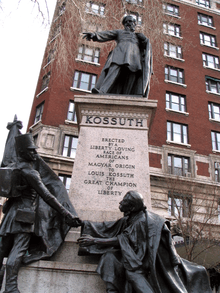
The first large wave of emigration from Hungary to the United States occurred in 1849-1850, when the so-called "Forty-Eighters" fled from retribution by Austrian authorities after the defeat of the Hungarian Revolution of 1848. Lajos Kossuth gave a seven-month speaking tour of the US in 1851 and 1852 to great acclaim as a champion of liberty, thereby unleashing a brief outburst of pro-Hungarian emotions. He left embittered because his refusal to oppose slavery alienated his natural constituency, and his long-term impact was minimal.[5] By 1860, 2,710 Hungarians lived in the US, and at least 99 of them fought in the Civil War. Their motivations were not so much antislavery as a belief in democracy, a taste for adventure, validation of their military credentials, and solidarity with their American neighbors.[6]
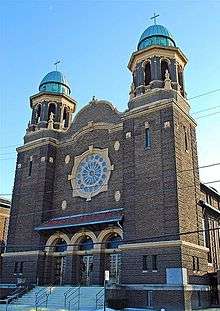
During the last decades of the 19th century and the early decades of the 20th century, the United States saw an immigration boom primarily of Southern and Eastern Europeans, among them approximately 650,000-700,000 ethnic Hungarian speakers. Unlike the educated classes who formed the core of the 1849 wave, the second Hungarian wave was mostly poor and uneducated immigrants seeking a better life in America.

An increase of immigration from Hungary was also observed after World War II and The Holocaust, a significant percentage of whom were Jewish.
Andrew Grove (1936-2016), one of the three founders of Intel Corporation summarized his first twenty years of life in Hungary in his memoirs:
By the time I was twenty, I had lived through a Hungarian Fascist dictatorship, German military occupation, the Nazis' "Final Solution," the siege of Budapest by the Soviet Red Army, a period of chaotic democracy in the years immediately after the war, a variety of repressive Communist regimes, and a popular uprising that was put down at gunpoint... [where] many young people were killed; countless others were interned. Some two hundred thousand Hungarians escaped to the West. I was one of them.[7]
In 1956, Hungary was again under the power of a foreign state, this time the Soviet Union, and again, Hungarians rose up in revolution. Like the 1848 revolution, the 1956 Hungarian Revolution failed and led to the emigration of 200,000 "56-ers" fleeing persecution after the revolution, 40,000 of whom found their way to the United States.
There was a renewed economic migration after the end of communism in Hungary during the 1990s to 2000s.
Demographics
According to the 2010 US Census, there were 1,563,081[8] persons of Hungarian ancestry in the United States as of 2006, with − according to 2000 census data − 1,398,724 of them indicating Hungarian as their first ancestry.[9] Estimates of the number of Hungarian Americans in the United States exceed 4 million, but also include the large number of ethnic Hungarian immigrants most of whom have emigrated from Romania, Czechoslovakia, or the former Yugoslavia.
The states with the largest Hungarian American populations include:[10][11]
| State | Population[10] |
|---|---|
| Ohio | 203,417 |
| New York | 157,863 |
| California | 133,988 |
| Pennsylvania | 132,184 |
| New Jersey | 115,615 |
| Michigan | 98,036 |
| Florida | 96,885 |
The highest percentage of Hungarian Americans in any American town, village or city is in Kiryas Joel, New York (the great majority of its residents are Hasidic Jews belonging to the Satmar Hasidic dynasty, which originated in Hungary) where 18.9%[12] of the total population claimed Hungarian as their ancestry. Other places with over 10% are Fairport Harbor, Ohio (14.1%)[13] and West Pike Run Township, Pennsylvania (11.7%[14]). About one hundred other municipalities have more than 5% of Hungarian-American residents, but the highest number of Hungarian Americans living in the same place is in New York City. Wallingford, Connecticut, has a vibrant Hungarian-American Club and community. Columbus has a Hungarian American neighborhood named Hungarian Village. The Fifth Ward of New Brunswick, New Jersey remains the traditional heart of the Hungarian community.
Hungarian-born population
Hungarian-born population in the US since 2010:[15]
| Year | Number |
|---|---|
| 2010 | 78,368 |
| 2011 | |
| 2012 | |
| 2013 | |
| 2014 | |
| 2015 | |
| 2016 | |
By state totals
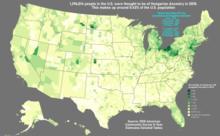
Estimated population by state according to the 2018 American Community Survey.[1]
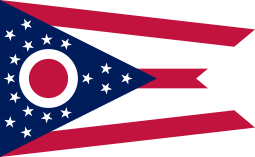
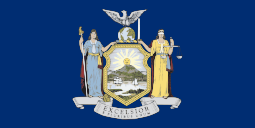
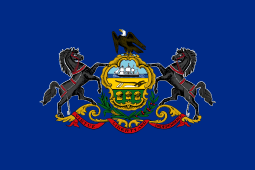
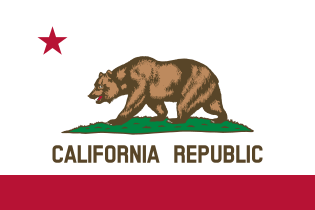

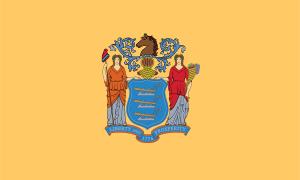

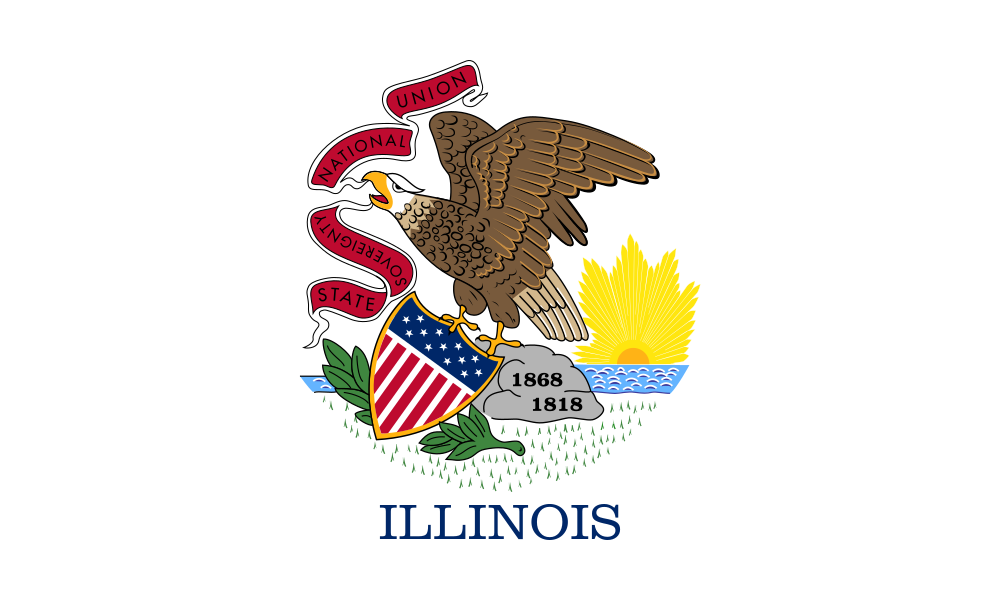




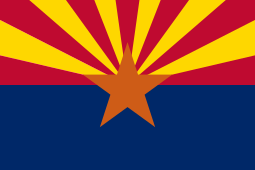
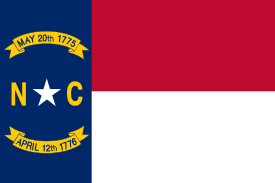
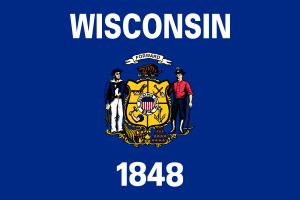
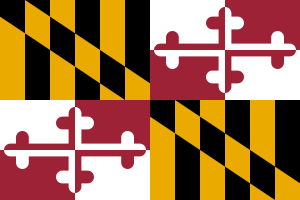
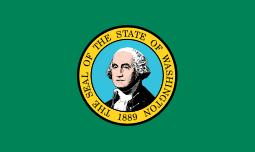
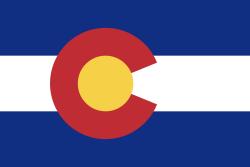
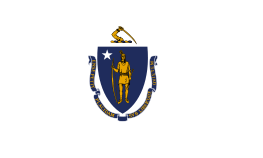
.svg.png)

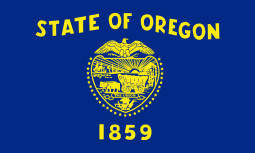
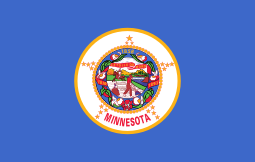


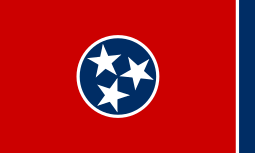
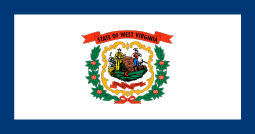
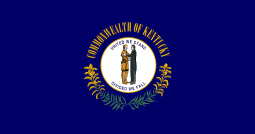
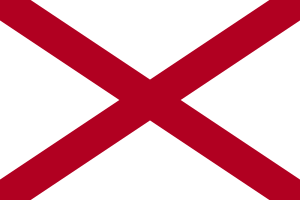
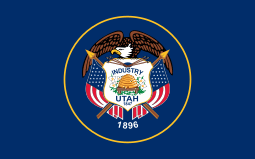
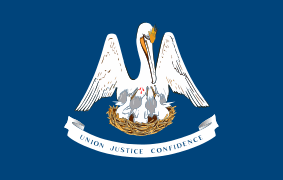


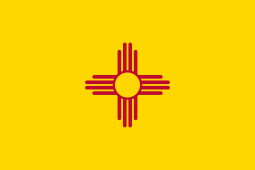
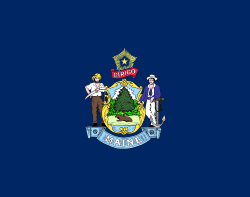
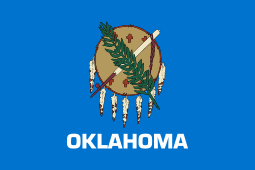
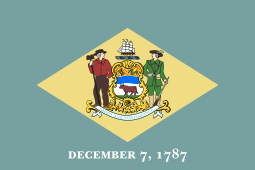



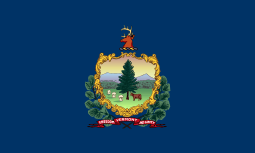

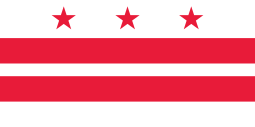
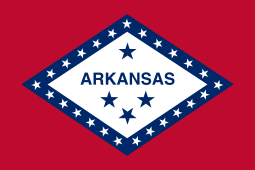
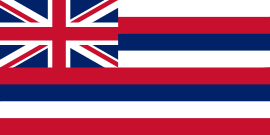

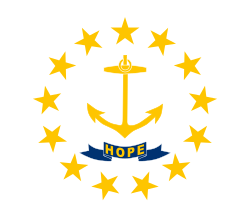

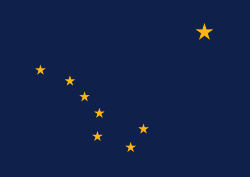
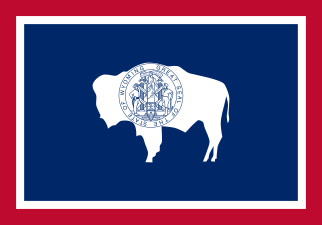
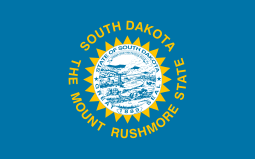
By percentage of total population

Estimated percentage of the population by state according to the 2018 American Community Survey rounded to the nearest hundredth of a percent.[1]






































.svg.png)












Notable people
In entertainment, Szőke Szakáll, known as S. Z. Sakall, was a Hungarian-Jewish film character actor. He was in many films including In the Good Old Summertime, Lullaby of Broadway, Christmas in Connecticut and Casablanca in which he played Carl, the head waiter. The comic style of Ernie Kovacs influenced numerous television comedy programs for years to come. The Fox Film Corporation was formed by William Fox. Comedian, Actor and Producer Louis C.K (born Louis Székely) is a US-Mexican dual citizen. His grandfather, Géza Székely Schweiger, immigrated to Mexico with his family from Hungary. Actress Vilma Bánky starred in numerous silent films opposite Hollywood legends such as Rudolph Valentino and Ronald Colman. Actor Adrien Brody's mother was Hungarian. Actress Rachel Weisz's father was Hungarian inventor George Weisz. Actress Drew Barrymore's mother is Hungarian.[16] Actor Tony Curtis has been in over 100 films, including his iconic roles in Some Like It Hot and The Defiant Ones. Actress Jessica Szohr of Gossip Girl is of partial Hungarian descent. Actor Peter Lorre became famous after his role as a murderer in Fritz Lang's M and went on to play many antagonistic villain roles. Legendary actor Béla Lugosi played Count Dracula in the stage version and subsequent film of Bram Stoker's classic. Academy Award winner Paul Lukas is perhaps best remembered his acclaimed role in the film Watch on the Rhine for his Professor Aronnax in Walt Disney's classic 1954 film version of Jules Verne's Twenty Thousand Leagues Under the Sea. Johnny Weissmuller, who formed Tarzan. Actress Ilona Massey was frequently billed as "the new Dietrich" and famously played the role of a femme fatale in Love Happy. Sex symbol Zsa Zsa Gabor was perhaps better known for her status as a socialite and nine marriages than her stint as an actress. Her younger sister Eva Gabor was known for her role on the television show Green Acres, and her older sister Magda Gabor famously helped save the lives of 240 Jewish families during the Second World War because of her relationship with a Portuguese ambassador. Harry Houdini, considered by many to be the greatest magician of all time, was an expert escapologist, introducing it as an art form. He was also a major critic and investigator of Spiritualists.
In filmmaking, Vilmos Zsigmond was nominated for four Academy Awards for Cinematography (won the Oscar for Close Encounters of the Third Kind). Laszlo Kovacs, most famous for his work on Easy Rider and Five Easy Pieces, won three Lifetime Achievement Awards for cinematography. Ernest Laszlo, who worked on over 60 films, won an Academy Award for cinematography for 1965's Ship of Fools. Andrew Laszlo, worked first in television (Ed Sullivan's Beatles at Shea Stadium and the miniseries Shogun with Richard Chamberlain) and made over 30 films including the cult classic The Warriors.
Director Frank Darabont, nominated for the Academy Award for Best Director three times, is most popular for Stephen King adaptations, including The Shawshank Redemption, ranked among audience polls as one of the greatest films of all time. Michael Curtiz was nominated for the Academy Award for Best Directing four times, finally winning for Casablanca, considered by many critic polls to be one of the greatest films ever made. George Cukor, who was of Jewish descent, won an Academy Award for Best Director for My Fair Lady. King Vidor was nominated for the same Academy Award five times. Independent directors and the films that have brought them acclaim include Nimród Antal for his cult film Kontroll; Peter Medak, infamous for his B-movies; and László Benedek for the Golden Globe Award-winning film rendition of Death of a Salesman.
Joe Eszterhas wrote the screenplay for Basic Instinct, dubbed a cult classic. Andrew G. Vajna produced the Die Hard, Rambo and The Terminator sequels. Ladislas Farago wrote numerous books on World War II espionage, including a screenplay for the film Tora! Tora! Tora!. Animator Gábor Csupó created the Rugrats series, an increasingly popular children's show.
Animator George Pal was known for producing landmark science fiction films, considered to be first to introduce the genre to film. The Academy of Motion Picture Arts and Sciences founded the "George Pal Lecture on Fantasy in Film" series in his memory.
In music, Miklós Rózsa composed numerous film scores; perhaps his most recognizable score was for the 1959 epic Ben-Hur. In classical music, Eugene Ormandy, music director for the Philadelphia Orchestra, was appointed an honorary Knight Command of The Order of the British Empire by the Queen of England and received the Presidential Medal of Freedom. In rock, Tommy Ramone and Gene Simmons, both of Jewish descent, founded legendary bands The Ramones and Kiss respectively
In sports, Monica Seles won nine Grand Slam singles titles and is the former No. 1 professional tennis player in the world. Joe Namath is a member of the Pro Football Hall of Fame, as Larry Csonka or Lou Groza, too. Notable players were the Gogolak brothers, especially Pete Gogolak, who invented the soccer style kicking. Famous coach was Don Shula. Former Mr. Universe Mickey Hargitay hit the spotlight when he married Jayne Mansfield. Olympic gymnastics coach Béla Károlyi coached nine Olympic champions, fifteen world champions, and six US champions. Al Hrabosky was a popular Major League Baseball player, nicknamed "the Mad Hungarian". And Joe Medwick was, also Charles Nagy. Gene Mako won four Grand Slam doubles titles in the 1930s. In volleyball, Karch Kiraly is the only person to have won Olympic gold medals (or indeed medals of any color) in both indoor and beach volleyball.
Jewish physicist Edward Teller[17] acquired the title of "the father of the hydrogen bomb," for his concept of a thermonuclear weapon that uses the energy of nuclear fusion. But he also worked in the Manhattan Project along with other Hungarian physicists like Eugene Wigner (who won the Nobel Prize in Physics in 1963 for his work on the discovery and application of fundamental symmetry principles of elementary particles) and Leó Szilárd. It was Szilárd who persuaded Albert Einstein to write his infamous letter to Franklin Roosevelt concerning atomic warfare. Theodore von Kármán was responsible for a number of key theories in aeronautic and astronautics research and development. László Bíró made "biro" the ballpoint pen.
In computer science, John George Kemeny co-developed the BASIC programming language in 1964 with Thomas Eugene Kurtz. Computer software businessman Charles Simonyi[18] oversaw the creation of Microsoft Office and invented the concept of "intentional programming." Leslie L. Vadász and Andrew Grove[17] were key leaders in the history of the Intel Corporation.
In sociology, Thomas Szasz was a prominent figure in the antipsychiatry movement, as well as a vocal critic of state control over medicine.
In astronomy, Victor Szebehely became a leading figure in NASA's Apollo program.
In biology and chemistry, Albert Szent-Györgyi[17] won the Nobel Prize in Physiology or Medicine in 1937 for discovering the biological process of Vitamin C in the human body. Georg von Békésy won the Nobel Prize in Physiology or Medicine for his research on the mammalian ear. George Andrew Olah won the Nobel Prize in Chemistry for his research on carbocations, and later hydrocarbons and their applicability to ethanol fuel. Ernő László, a prominent dermatologist, found the Erno Laszlo Institute for cosmetic research. Andor Szentivanyi discovered "The Beta Adrenergic Theory of Asthma."
In mathematics, Paul Halmos contributed significantly to probability theory, statistics, and logic. László Lovász made pioneering developments in the study combinatorics, winning both the Wolf Prize and Knuth Prize in 1999. Cornelius Lanczos developed numerous techniques for mathematical calculations, of which the Lanczos algorithm and Lanczos approximation are named after him. Jewish mathematician John von Neumann, acknowledged as one of the foremost mathematicians[17] of the 20th century, contributed to a wide variety of fields, including computer science, economics, quantum theory, statistics, and hydrodynamics. Neumann's work on nuclear physics was influential in the Manhattan Project. The John von Neumann Theory Prize and the IEEE John von Neumann Medal are named in his honor. Peter Lax is a winner of the Wolf Prize in Mathematics and the Abel Prize known for his contributions in several mathematical fields.
In art, Bauhaus artist Marcel Breuer became known as one of the first modernists for his modular construction and simple forms. Another Bauhaus artist László Moholy-Nagy, highly influenced by Russian constructivism, helped introduce the movement to the United States; he was a strong advocate of the integration of technology and industry into the arts. Lajos Markos was a significant portrait artist, having created portraits for iconic celebrities such as John Wayne. Photographer Sylvia Plachy published several photobooks detailing her personal history in Central Europe.
In politics, Tom Lantos was a US Representative for San Francisco, being the only Holocaust survivor to serve in the US Congress. The father of former New York governor George Pataki is ethnic Hungarian;[19] he still speaks some Hungarian today.[19] Peter R. Orszag, the Director of the Office of Management and Budget under President Obama has Hungarian roots.[20] Besides US Representative Lantos there were other Hungarians in the Congress, like Ernest Istook, Joseph M. Gaydos, Eugene Jerome Hainer or Ernie Konnyu.
Others include famous Holocaust survivor Nobel Peace Prize winner Elie Wiesel known for his activism and for writing the critically acclaimed Night. Agoston Haraszthy, a famous traveller and writer, became known as the "Father of California Viticulture" and perhaps one of the most accomplished viticulturists in US history. Joseph Pulitzer, a journalist of Jewish descent famous for helping create "yellow journalism" and posthumously establishing the Pulitzer Prizes. Csaba Csere[21] was Editor-in-Chief of Car and Driver from 1993 to 2008. In the world of business, billionaire aircraft leasing, philanthropist Steven F. Udvar-Házy, billionaire-philanthropist-political activist George Soros, a Jewish Holocaust survivor, are notable Hungarian Americans.[17]
Fictional people
- S.Z. Sakall played Hungarian chef Felix Bassenak in Christmas in Connecticut and made famous the expression "everything is hunky dunky."
- Lisa Douglas (née Gronyitz), immigrant Hungarian wife of Oliver Wendell Douglas, protagonist of 1960s US CBS situation comedy series Green Acres.
- Three of the four main characters in Jim Jarmusch's award-winning 1984 film Stranger Than Paradise were Hungarian-Americans (one was a recent Hungarian emigre).
- Karchy Jonas and his father Istvan are Hungarian immigrants to the United States in the 1997 movie Telling Lies in America.
- Scot Harvath, the protagonist in many works by best-selling author Brad Thor.
- Hannah Horvath, protagonist of the contemporary HBO comedy-drama series Girls.
- The characters Helga Pataki, Robert (Bob) Pataki and Olga Pataki from the cartoon Hey Arnold! are believed to be of Hungarian descent due to their surnames.
- Kati Farkas on Gossip Girl.
Gallery
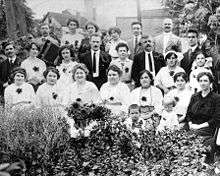 Hungarian immigrants celebrating the sunflower harvest in Cleveland, 1913.
Hungarian immigrants celebrating the sunflower harvest in Cleveland, 1913. Hungarian Reformed Church. Taken in Homestead, Pennsylvania
Hungarian Reformed Church. Taken in Homestead, Pennsylvania Saint Elisabeth of Hungary Church in Smethport, Pennsylvania
Saint Elisabeth of Hungary Church in Smethport, Pennsylvania The First Church of Christ, Unitarian of Lancaster, Massachusetts
The First Church of Christ, Unitarian of Lancaster, Massachusetts- Birmingham Historic District, Roughly bounded by Genesee, York, Esther, Magyar, Consaul, and the CSX and Norfolk Southern tracks in Toledo, Ohio
See also
- Hungarian Canadians
- Hungarian diaspora
- Hungarian Ohioans
- History of the Hungarian Americans in Metro Detroit
- Hyphenated American
References
- "PEOPLE REPORTING ANCESTRY 2018: ACS 5-Year Estimates Detailed Tables". United States Census Bureau. Retrieved 8 May 2020.
|archive-url=is malformed: save command (help) - Brian McGinty, Strong Wine: The Life and Legend of Agoston Haraszthy (Stanford University Press, 1998), 1.
- Útazás Éjszakamerikáában (Travels in North America), Pest, 1846, 2d ed., Pest, 1850; McGinty, Strong Wine: The Life and Legend of Agoston Haraszthy, 101.
- Pinney, Thomas, A History of Wine in America (University of California Press, 1989), 269; McGinty, Strong Wine: The Life and Legend of Agoston Haraszthy, 1.
- Steven Béla Vardy, "Lajos Kossuth and the Slavery Question in America," East European Quarterly (2005) 39#4 pp 449-464.
- Istvn Korn'l Vida, Hungarian Emigres in the American Civil War: A History and Biographical Dictionary (2011) excerpt and text search
- Grove, Andrew S. Swimming Across: a Memoir, Hachette Book Group (2001) Prologue.
- Bureau, U.S. Census. "U.S. Census website". United States Census Bureau. Retrieved 2018-05-27.
- "Ancestry 2000". US Census Bureau. 2000. Archived from the original on February 10, 2020.
- Data Access and Dissemination Systems (DADS). "American FactFinder - Results". Archived from the original on 12 February 2020. Retrieved 17 March 2015.
- "Hungarians in the United States". US Census Bureau. Hungarian Human Rights Foundation. Archived from the original on 2013-07-21. Retrieved 2008-12-09.
- "Ancestry maps - Hungarian communities". ePodunk. Archived from the original on 2015-09-06. Retrieved 2008-12-09.
- "Fairport Harbor, Ohio". Retrieved 17 March 2015.
- "West Pike Run township, Washington County, Pennsylvania (PA)". Retrieved 17 March 2015.
- Bureau, U.S. Census. "American FactFinder - Results". factfinder.census.gov. Archived from the original on 2020-02-14. Retrieved 2018-04-23.
- "Drew Barrymore". The Biography Channel. Archived from the original on 2008-06-13. Retrieved 2008-09-12.
- "Hungarian Americans". Encarta. Archived from the original on 2009-11-01. Retrieved 2008-09-13.
- "Spaceflight Participant Charles Simonyi" (PDF). NASA. Retrieved 2008-12-16.
- Dao, James (1995-09-25). "In Hungary, Pataki Gets Treatment Of a Star". The New York Times. Retrieved 2008-02-27.
- "From the Banks of the Danube to the Banks of the Potomac". whitehouse.gov.
- "In Memory of the Original Road Warrior and a Car and Driver Institution - Column". Car and Driver. January 2008. Retrieved 2008-12-16.
Further reading
- Lengyel, Emil. Americans from Hungary (Lippincott, 1948).
- McGuire, James Patrick. The Hungarian Texans (San Antonio: University of Texas, Institute of Texan Culture, 1993).
- Papp, Susan M. Hungarian Americans and Their Communities in Cleveland (Cleveland State University, 1981.
- Várdy, Steven Béla, and Thomas Szendrey. "Hungarian Americans." Gale Encyclopedia of Multicultural America, edited by Thomas Riggs, (3rd ed., vol. 2, Gale, 2014), pp. 373-386. Online
- Várdy, Steven Béla and Agnes Huszar Vardy, eds. Hungarian Americans in the Current of History (2010), essays by scholars; online review
- Vida, István Kornél. Hungarian Émigrés in the American Civil War: A History and Biographical Dictionary (Jefferson, NC: McFarland, 2012) 256 pp.
